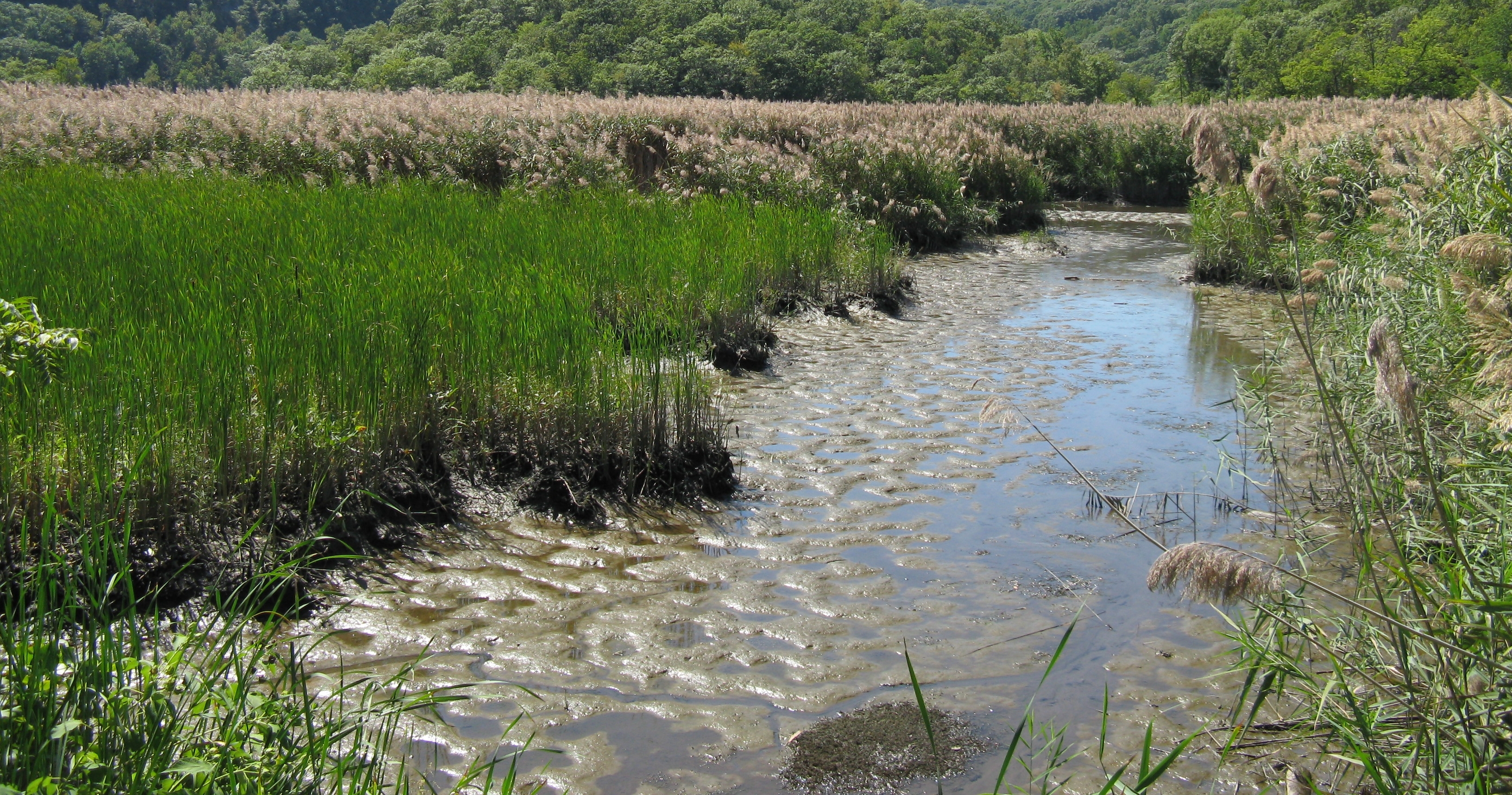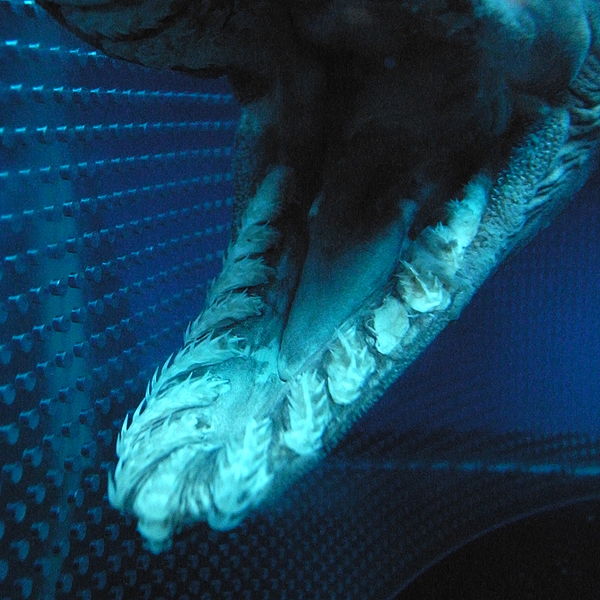This is the fourth post in my series exploring the creation of my new campaign setting, The Eleven Pillars. The first post answers some important questions about the setting, while the second post provided a map and some general terrain notes. Post 3 looked at a specific terrain/region of the Lowerlands and described the dominant creatures found therein. This post is similar to #3 because it is also focused on a specific region and creature. If you haven’t read the previous posts in this series some elements of this one might not make much sense – go ahead and read them and come back :)
As it turns out, between the last post and this one I met with and joined a new RPG group. They want me to run them through a Basic D&D campaign and I have decided to use the Eleven Pillars as the setting for the campaign. I believe they will spend most of their time travelling and mapping out the Lowerlands, looking for treasure and trying to gain prestige and a good reputation. It is for that reason that I am continuing to focus on the Lowerlands – busying myself with fleshing out the main regions and creating a few small lairs and larger dungeons.
I was going to tackle the area south of the Fraywood next, but I got inspired by this thing:
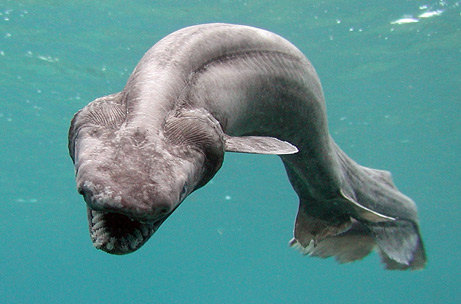
It’s a frilled shark – National Geographic recently posted this image on their webpage. As soon as I saw this thing, I thought about what a great and grotesque creature it could be if I gave it some life in my D&D campaign. I decided that it should live in a marshy or boggy area and that the powerful gills (that give it it’s ‘frilled’ name) are so strong they allow it to swim through the most disgusting, dirty, muddy swampy bog that anyone has ever imagined. It just so happens that I have one of those wetland type regions in my setting, so I decided to write about it this week.
The Cinereal Marsh Region
The region just to the south and east of the Cineral Pillar contains a few miles of hills that give way to an ever encroaching marshland. The ancient name of this region is lost to time so most of the current residents of the world refer to it as the Cinereal Marsh. This area was mentioned, though not by name, in my original post as the location of the Spire of Kradnick Hills, where a legendary lost treasure can possibly be found. Here is the initial information: “The Spire of Kradnick Hills is a ruined temple that sunk into the ground when the hills finally succumbed to the encroaching swamp. The temple was a proving ground for the Hands of Justice, a group of paladins who followed the teachings of Brindalia the Wise, a devout paladin of Nedenoe (Bringer of Light; one of the old gods). Within the temple ruin is said to rest the Ring of Mitya, a powerful magical piece said to bring flight to deserving wearers.” Finding the Ring of Mitya may, in fact, be the first major quest of the campaign. The Cinereal Pillar is close to one of the arcane academies and is a popular destination for those who wish to trade arcane secrets or sell those spell components gathered on the last outing into the Lowerlands.
So what does a marsh look like in this setting? Once again it seems we should run into a strange, otherworldly set of flora and fauna, but it isn’t as strange as you may think. Remember that being below constant cloud cover doesn’t mean NO sun, it just means less direct sunlight. After all, a human on earth can get a sunburn even on an overcast day. That means that the leafy plants and marsh grasses that grow in this region will get sun, but it will be as if under a constant heavy shade tree. Therefore the grasses will tend to have wide blades and any leafy plant will tend to have thin and wide leaves. The ample water will allow them to grow tall and stiffly, and I can see things like cat-tails, sedges, reeds, and lots of floaters and pondweeds. The ground will be soggy and sometimes muddy due to the constant state of water saturation in the region. No woody trees or shrubs will be there, but swamp ferns (ferns with large, thin fronds) and bog bushes (non-woody bush style plants) will be plentiful. On the outskirts of the marsh lots of root vegetables will grow, thriving on the abundant water and the nutrient runoff from the nearby hills. The marsh might look a little like this picture of Iona Marsh from Trailsidezoo.org, but probably a lot darker because of the clouds:
The Bog Frill and its Kin
One of the more vicious and stealthy predators in the Cinereal Marsh is the Bog Frill (see the picture at the beginning of the post). Bog frills are aquatic predators whose intricate gill system allow them to easily swim through mud and algae laden bodies of water. Their color ranges from blue-grey to mottled brown and they exhibit a slight change in skin color when moving into areas with different mud or algae content, providing a natural camouflage. They usually hunt alone and have been known to slide out of the water to attack a victim on the bank of a slow moving bog river or marsh pool. These dangerous creatures can grow up to 5 feet in length and very old ones can have a mouth gape of up to 3 feet. This large gape is due to the flexible hinges on their jaws that allow them to swallow their prey whole. Bog Frills are reported to be omnivorous, but their many-faceted teeth, which branch and spiral inward in multiple rows, allow flesh to be trapped – once it goes in, it isn’t meant to come out. These teeth are built for carnivorous efficiency, but scholars do not agree on this animal’s eating habits.
Bog Frills are distantly related to Cloud Eels, which live and hunt in the cloud layer. Cloud Eels are smaller and less numerous than their Lowerland cousins, but still very dangerous. Cloud Eel gills are not as large or developed, but their teeth are nearly identical to the Bog Frill.
Random Encounters in the Cinereal Marsh
A party traveling near or through the Cinereal Marsh must take care to not muddy up the water – that tends to attract the Bog Frill, whose senses can pick up on a large animal moving through the marsh up to a mile away. The only major intelligent humanoid creature that makes its home in the Cinereal Marsh is a population of lizardmen. They claim all of the marsh as their territory, but do not actively patrol since no other creature tries to impinge on their land. Plenty of other creatures live in the Marsh – to find out if any are encountered, roll for wandering monsters as normal – if an encounter is indicated, roll 3d6 and consult the Cinereal Marsh Wandering Monster table below:
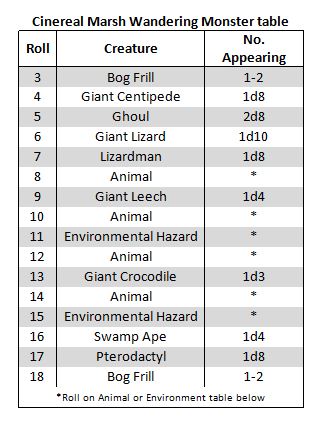
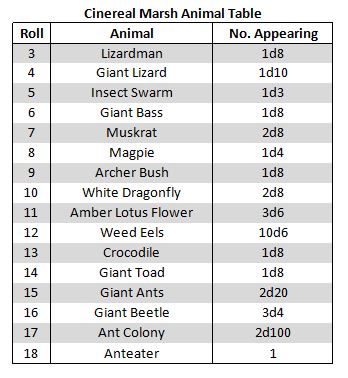
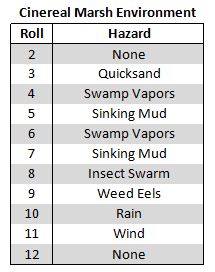
That’s all I have for the Cinereal Marsh right now. I will be describing the Pillars, the origin of their names, who lives where, and what the towns themselves are like in my next post. I may also add in information about the deities of the setting.
Until next time, I wish you good gaming!
~DMSamuel

